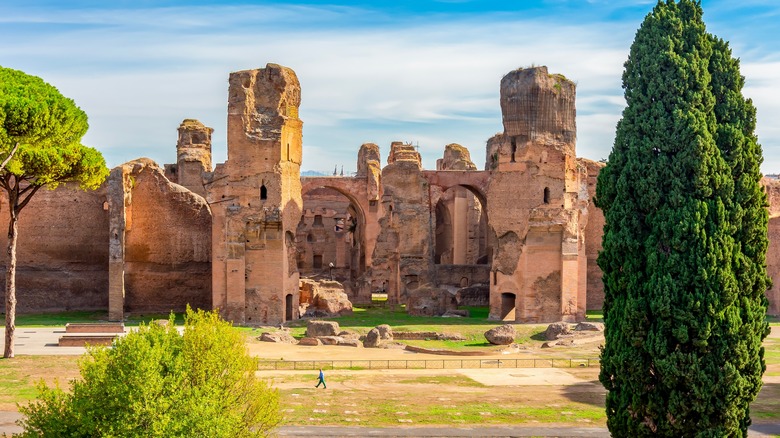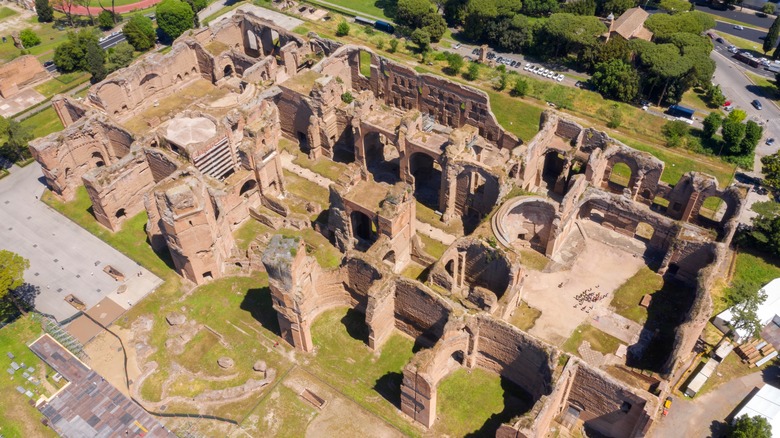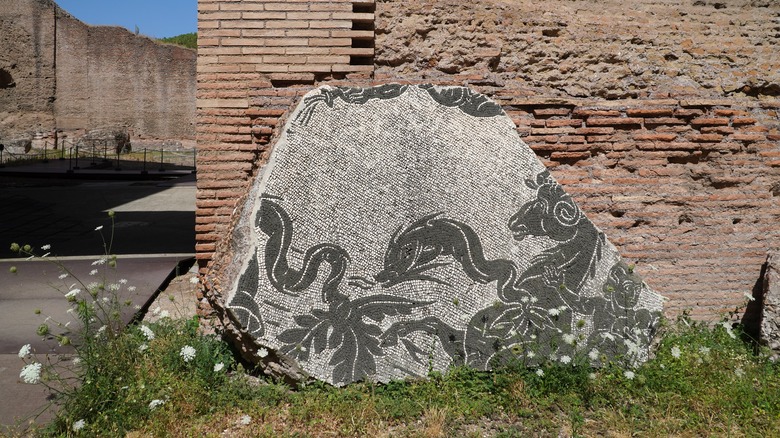A Short Walk From A Tourist Hot Spot In Rome Is An Underrated Historic Site Rick Steves Loves
A mile down the street from the Colosseum in Rome is a lavish, crumbling structure you've probably not heard of. But it will knock your socks off if you are an ancient history lover who enjoys visiting Roman ruins in Italy. The 28-acre site is the Baths of Caracalla, also known as Thermae Antoninianae. The place is impressive not only because of its size but also because "for 1,500 years, it has stood as a ruin, with nothing built around or on top of it," Rick Steves points out in his blog.
This feature distinguishes it from other places like the Forum, where newer buildings were constructed over the sites of older ones, creating a layering effect that tends to obscure the grandeur of the original edifices. But at the Baths of Caracalla, one can gaze at the surprisingly intact architecture erected between 212 and 216 AD and envision the daily bathing rituals of the ancient Romans. "With a good imagination," says Steves, "you can picture Rome at its zenith." In its heyday, the building would have been filled with blissed-out bathers, majestic marble columns and floors, shimmering glass mosaics, elegant frescoes, and hundreds of statues. At Caracalla, getting clean was anything but boring.
Caracalla's fascinating history
Think of the Baths of Caracalla as a gigantic Roman spa with free admission, big enough to hold 1,600 people at one time, notes tour guide Francesca Caruso in a video posted on Steves' blog'. Citizens from all social classes visited the baths regularly to wash up, hang out with their buddies, and maybe gossip a little bit. In addition to the rooms with hot and warm pools (caldarium and tepidarium, respectively), Caracalla had a cold room (a frigidarium) where people could dunk themselves in unheated water. Modern humans have invented many things, but we definitely didn't conceive cold plunges.
Enslaved people stoked fires in underground chambers to heat the warmer pools, steam room (sudatorium), and sauna (laconium), using up to 10 tons of wood per day to keep those furnaces chugging. The enslaved worked in hot, smoky conditions that must have been "absolutely hellish," remarks Caruso in the video tour. It was not a fun job, and people were forced to do it.
In other parts of the bath, males and females could engage in light sports, like ball throwing or splashing around in the outdoor pool (called the natatio). There were also other areas for watching sporting events, attending lectures, and studying. A mill on the grounds suggests that bread was baked on the premises to feed hungry patrons. Those Romans didn't like to go hungry, even when bathing.
Discovering Caracalla
Adding this underrated site in Rome to your bucket list is an incredible way to spend a few hours. Stroll through the different sections, such as the circular Caldarium, with its impressive main pool and 130-foot high domed ceiling, similar in size to the Pantheon's. Visit the other pool rooms, each with its distinct ambiance, to see which one appeals to you the most. Take the time to appreciate the striking mosaics scattered throughout the grounds, some depicting mythological figures and ancient scenes.
Every day (except Mondays, Christmas, and the New Year), the Baths of Caracalla open to the public at 9 a.m. Closing times range between 4:30 p.m. and 7:15 p.m., depending on the season. Tickets can be purchased online or at the site; prices are around $11 but vary with the mode of purchase and visitors' age and other characteristics. A magical way to experience the ruins if you visit Rome in summer is to attend an opera, ballet, or other live performance in what has become its open-air theater. To learn more about Rome's fascinating ancient history, head 1.6 miles down the road to Caffarella Park, another lesser-known spot among tourists but a local favorite.


